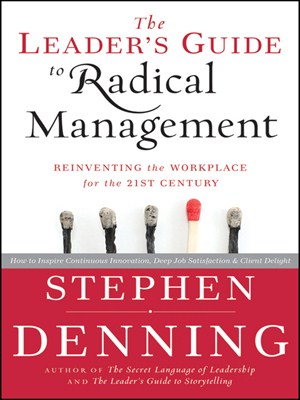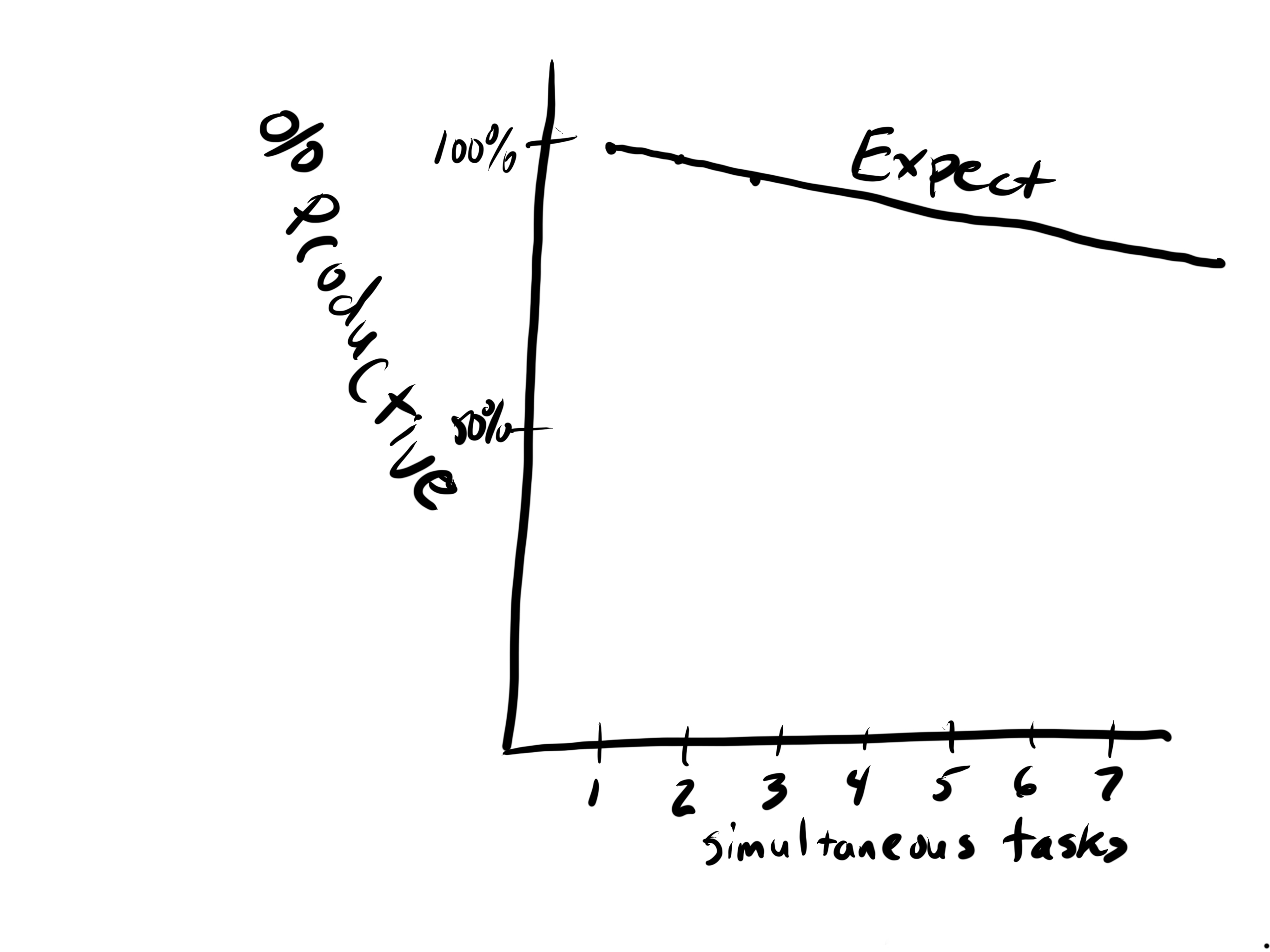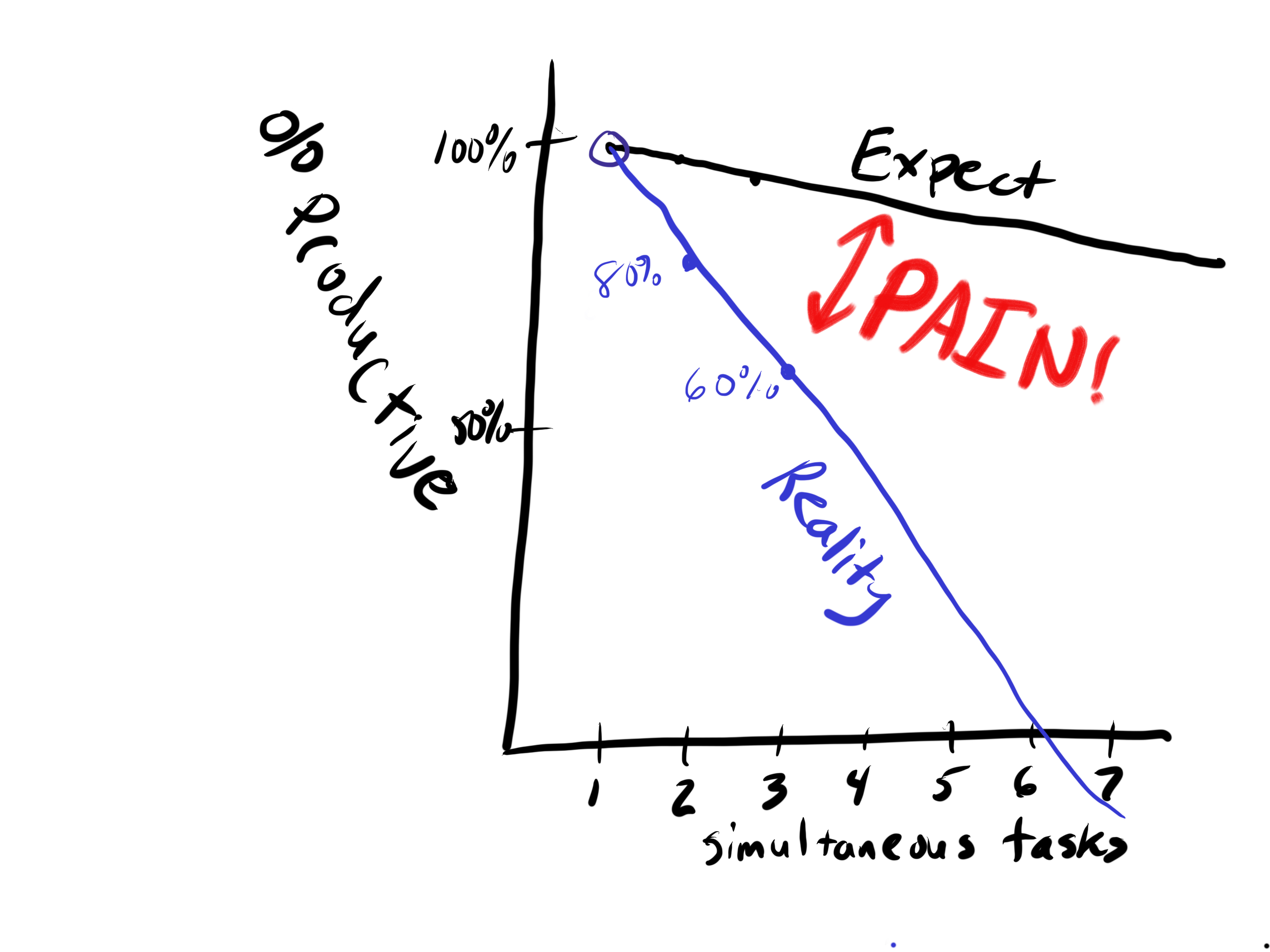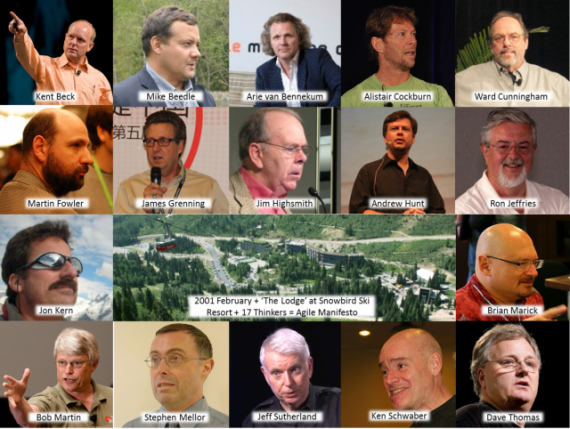Peter Drucker ’s view is integral to the values of Scrum
Peter Drucker said, “Concentration is the key to economic results. No other principles of effectiveness is violated as constantly today as the basic principle of concentration.” Many years later, Ken Schwaber and Mike Beedle, wrote the first book about Scrum titled “Agile Software Development with Scrum.” In Chapter 9 they mentioned five Scrum values, one of which is Focus.
They wrote,
“Do your job. Focus all of your efforts and skills on doing the work that you’ve committed to doing. Don’t worry about anything else.”
I find it interesting, fascinating, and frankly a bit spooky, that Peter Drucker’s quotes from decades earlier are finding their way into our conversations about Scrum and agile in general. I know fellow Scrum Alliance board member Steve Denning doesn’ t find it weird at all though. His book “The Leader’s Guide to Radical Management: Reinventing the Workplace for the 21st Century” is all about how he stumbled upon agile as the key to reinventing management in the 21st century. Steve is also a huge proponent of Peter Drucker, including using his influence to get the Scrum Alliance to be a major sponsor of the Drucker Forum last year. He even created the Scrum Alliance Learning Consortium for the Creative Economy. Nothing about Drucker’s views being lived out in today’s agile world surprise Steve, but still, the guy has been dead for a while and I find it spooky to see his forward looking vision of the world being lived out.
t find it weird at all though. His book “The Leader’s Guide to Radical Management: Reinventing the Workplace for the 21st Century” is all about how he stumbled upon agile as the key to reinventing management in the 21st century. Steve is also a huge proponent of Peter Drucker, including using his influence to get the Scrum Alliance to be a major sponsor of the Drucker Forum last year. He even created the Scrum Alliance Learning Consortium for the Creative Economy. Nothing about Drucker’s views being lived out in today’s agile world surprise Steve, but still, the guy has been dead for a while and I find it spooky to see his forward looking vision of the world being lived out.
I find it especially interesting when it comes to the scrum value of “focus.” It is rare when we start working with clients to see any sort of focus at any level of the organization. Multi-tasking is not only rampant, but being able to do it well is considered an admirable attribute! It is clear to me that most managers and executives don’t understand the huge toll multi-tasking takes and how much productivity is being lost to the effects of multi-tasking. Peter Drucker understood it. I believe his use of the word “concentration” could easily be the same as “not multi-tasking.” So he effectively says not multi-tasking “is the key to economic results.” In other words, if you are going to do one thing right in terms of generating economic results, make that one thing be focus! It leads to an interesting expression: If you focus on focusing then you will achieve better results.
It is rare when we start working with clients to see any sort of focus at any level of the organization. Multi-tasking is not only rampant, but being able to do it well is considered an admirable attribute! It is clear to me that most managers and executives don’t understand the huge toll multi-tasking takes and how much productivity is being lost to the effects of multi-tasking. Peter Drucker understood it. I believe his use of the word “concentration” could easily be the same as “not multi-tasking.” So he effectively says not multi-tasking “is the key to economic results.” In other words, if you are going to do one thing right in terms of generating economic results, make that one thing be focus! It leads to an interesting expression: If you focus on focusing then you will achieve better results.
Let’s examine for a bit why being able to focus is so important. To me it boils down to a lack of understanding of the penalty inherent in multi-tasking. For starters, recent studies have shown that only 2% of the human population can naturally multi-task with little to no penalty in performance. I’m pretty sure no company in existence has been able to hire people exclusively in this small club. So the rest of our companies are paying some significant penalty for the multi-tasking expected of workers. The graph below shows what we expect a decay curve to look like for amount of productive work done by someone who is multi-tasking. (use graph I draw in class) We all recognize there is a penalty to be paid, but we believe the penalty to be small.
However, actual data shows something different. In reality the penalty is very high as shown in the graph below. (use a graph based on the 20% penalty for each item added to multi-task)
We tend to think multi-tasking is ok because our brains tell us the penalty isn’t large. So we merrily schedule people to work on many projects at once because after all, that’s the best way to maximize the work done and minimize waste. They will always be busy on something! Or so our thinking goes. Unfortunately, when we are exposed to working on a lot of things we tend to think about a lot of things and even when we feel like we are focusing, our thoughts wander and we multi-task anyway. I won’t get into why 100% utilization of people is a bad outcome to strive for (well, maybe in a future article), but I will say that expecting people to be super-human super-taskers and not be affected by multi-tasking is quite insensitive, irresponsible and disrespectful. Some people might consider it borderline abusive depending on how it is presented.
If people are motivated by doing their best and being able to take pride in their work (see Peter Green’s blog entry on autonomy, mastery and purpose), then how does being less efficient due to multi-tasking affect people? Stated differently, if someone feels they are being less productive due to multi-tasking, how will that affect their overall productivity? Once we start investigating these issues we quickly see why graph 2 above has such a large penalty for multi-tasking. More importantly, we see why people feel bad about themselves and their employment: they are being asked to do the impossible!
So what are you going to do about it now that you have been exposed to this data? When I first saw the data I started asking executives why they routinely flush 40% of their yearly development budget down the toilet (the average person in IT is working on 3 things at once according to my not at all scientific polling of a few thousand people)? Or, I get more specific with dollars and sense and ask they why their $1,000,000/year Scrum team is being told to waste $400,000 of productivity! When they hear numbers like that it gets their attention. Most would inquire how they were doing that, or they would be in denial and say there is no way they are doing that. They weren’t aware of the graphs and data above. Once it is exposed to them they have to make a choice. Do they choose to ignore the data and continue flushing 40% down the toilet by having people multi-task 3 items at once, or do they do something different and try to get use of that 40% of their budget.
Interestingly, many never change. They are in denial of the problem. Others go through a lot of other emotions before they finally gave in and recognize the problem was and is real. At that point many great things happen. Morale goes up. Productivity goes up. Quality goes up. Timelines shrink because productivity is up. Customers are happier more often. And then the cycle starts again because that result causes morale to go up, which causes productivity to rise, etc. It is still possible to derail the success, but once success is tasted, organizations tend to want to continue to be successful, so their people will find a way back to this state if it is possible to reach again. Sometimes it may not be possible (because of changes in leadership for example). In those cases the positive change is lost and the organization has lost a tremendous opportunity.
Organizations of all sizes need to understand that multi-tasking is evil. It causes problems instead of fixing them. When in doubt, go back to the teachings of Peter Drucker. Again, he was very specific:
“Concentration is the key to economic results. No other principles of effectiveness is violated as constantly today as the basic principle of concentration.”
Now that you know this fact, what will you and your organization do about it? We’ve helped many companies through this and we’d be happy to help you, your team or your entire company, get to a better place. If you are interested in help, call us (1-303-766-0917), email us (info@agileforall.com) or take one of our public courses.
I plan to write about more Drucker quotes in the future. If you have one you particularly like, please email me or leave it in the comments below.
If you liked this article, please take a moment to recommend it and share it with others using the buttons below.








Peter, great write! The quote l like “Business has only two functions — marketing and innovation.”
Hi Bob
Thanks for the article and the reference to Strayer’s research. My multi-tasking exercise in my Scrum training always triggers amusement and denial from the self-anointed multi-taskers. I minimized my own multi-tasking about 18 years ago so I rarely have problems with time management. Of course you can never completely avoid multi-tasking. If I remember reading the book correctly the quote from Drucker has to do getting corporations to focus on what they are specifically good at and pushing the other stuff away or even outsourcing it. One thing I would add is that concentrating on the right thing and using the right thinking mode is also critical.
regards Han
Hi Bob. May I ask where you got that 20% figure from? If it’s just a guess, then you can’t quote it as ‘data’ at all. While I entirely agree with your argument, it would be nice to present facts to executives instead of emotive graphs based on guesswork.
Chris, I actually got the data from multiple sources, including Jerry Weinberg. This article mentions it. I don’t just throw numbers out without having a place where I found them. I believe I also found a few other references to similar numbers in various books, but this is the easiest article to reference.
If you don’t believe it, do some simple experiments on yourself or others. You will generally find the costs much higher than 20%!
That graph you reference seems to show a much bigger drop with the first additional task, 60 basis points, then 20, 20, 10, and 5, so a curve.
If the average number of tasks is 3, the cost is more like 80%, or am I missing something?
Now to find my copy of Weinberg’s book 😉
The graph has a different representation than mine. The blue bars are “per project” so it says with 2 tasks you are 40% on each of 2 projects, hence 80% total. I thought the way they did it was hard to understand, which is why I draw it differently (and I think more clearly). Thanks for asking the question Mark!
– Bob –